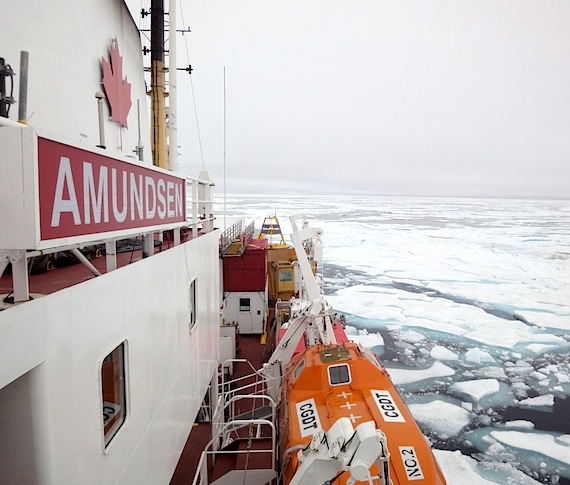Amundsen icebreaker prepares for another summer of Arctic science
Some of the research is from studies that had to be abandoned last year when the icebreaker was diverted from scientific research to search and rescue efforts.

Researchers on Canada’s Amundsen icebreaker have embarked on another voyage to conduct scientific research in the eastern Arctic.
The Amundsen is the only Canadian Coast Guard icebreaker dedicated to scientific research. The vessel, which left port in Quebec City on May 25, has been used for annual scientific expeditions every summer since 2003.
The first leg of its 106-day expedition will be devoted to a project initially scheduled to take place last year. That didn’t happen, after unusual amounts of sea ice ended up clogging the Strait of Belle Isle, off Newfoundland, and the Amundsen diverted from its course to help with search and rescue operations and with assisting ferries and fishing boats.
The delayed study is called the Hudson Bay System, or BaySys, co-led by the University of Manitoba and Manitoba Hydro. The $17-million, five-year project will look at how climate change is influencing the mixing of fresh and salty waters in Hudson Bay.
It will also support work on a project called GENICE, funded by Genome Canada, which will investigate whether oil-eating bacteria could be used to help clean up oil spills in icy waters.
A later leg of the journey will be spent working on Université Laval’s ongoing Sentinel North program, which is examining the links between global climate change and Inuit health.
Part of this year’s work will look at how contaminants are passed from algae to marine mammals consumed by Inuit. Another part will use special sensors to try to detect gases that drive climate change, like carbon dioxide and methane, in the water and air.
Another project is the Vulnerable Marine Ecosystems program, led by Memorial University of Newfoundland in collaboration with Fisheries and Oceans Canada, ArcticNet and the Royal Netherlands Institute for Sea Research.
Between Iqaluit and Resolute Bay, researchers will try to acquire baseline data on the biodiversity of fragile underwater ecosystems in the Labrador Sea and Baffin Bay, such as coral forests and sponge grounds.
The final leg of the journey will include work on the Kitikmeot Marine Ecosystems Study, a collaboration between The W. Garfield Weston Foundation and Parks Canada that aims to build on knowledge of the Queen Maud Gulf region of Nunavut where the historic Franklin expedition ships HMS Terror and Erebus are located.
Results from this year’s research will be presented at ArcticNet’s annual scientific meeting in Ottawa in December.